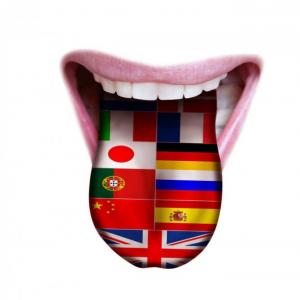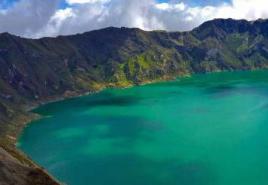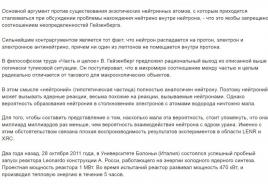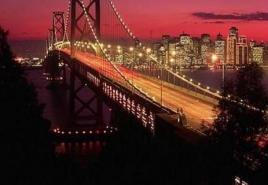When Japan's unconditional surrender was signed. Japan's act of surrender
The atomic bombings of the Japanese cities of Hiroshima and Nagasaki are crimes against humanity. To justify these atrocities, huge information efforts are being made today. On the next anniversary of this crime, the following "postulates" can be read in abundance on the Russian Internet and in the media. They say that an atomic strike, of course, is not a good thing, but it helped save the lives of American soldiers. They even call the figure - 100,000. Where did these figures come from? You can guess how many Japanese died in the fire whirlwinds of Hiroshima and Nagasaki.
But on this information soldiers, guarding the interests of the United States, are not appeased. They lie further - it turns out that the dropping of atomic bombs helped to save ... the lives of the Japanese. More of them would have died if the real "final" landing of the US Army on Japanese territory had begun. But that's not all. The Japanese should be grateful to the States - after all, it turns out that they were ... saved from communism. The logic is cannibalistic. Following it, the prisoners of Auschwitz had to be grateful to their jailers, that they killed them and thereby saved them from communism.
But the lies don't end there either. Conscientious and independent bloggers write with blue eyes that the US atomic strike on Japan helped save ... the lives of Soviet soldiers. Although the blow of the Soviet army to the Kwantung army occurred after Hiroshima and Nagasaki, and the liberation of the Kuriles and Sakhalin took place after that. And the Japanese resistance was broken not by atomic strikes, by order to surrender or by fear, but by the military skill of the commanders and the soldiery prowess of the Russian soldiers.
The atomic strike did nothing to end the war. Japan surrendered because the USSR entered the war. There was no point in fighting further. The last hope of Tokyo collapsed - that Stalin would act as a kind of mediator to conclude acceptable terms of peace between Japan, the United States and Great Britain.
This is the article of the leading expert on Japan in our country, Professor Anatoly Arkadyevich Koshkin.
Preparing for the first strike
For the first time in the world, an atomic strike on living people - children, women and the elderly was entrusted to the 509th air group of the 20th Air Army, relocated in January 1945 to Cuba, where in deep secrecy the crews practiced bombing, including using radar targeting.
The air group was commanded by Paul Tibbets, a twenty-nine-year-old Air Force Colonel, who was repeatedly awarded for successful air battles with the German Luftwaffe. The colonel began to prepare his group for a special assignment in the summer of 1944, when the atomic bomb was not yet ready. He himself formed the command of the 393rd Bomber Squadron, which was to drop the "product". The 509th air group was supplied and equipped "at the highest level." Of different parts The US Air Force was withdrawn and sent to this air group 14 B-29 bombers of the latest modification.
Although the island of Guam was better equipped, the American command and personally Admiral Chester Nimitz chose Tinian Island, also in the Mariana Ridge, as the base from which the B-29 with an atomic cargo were to take off. This island is located 150 km closer to Japan than Guam, it had a perfectly flat coral area for use as an airstrip and was convenient for landing large bombers from the sea.
Components atomic bomb were delivered to Tinian harbor on July 26, 1945 by the cruiser "Indianapolis". It was reported to Washington that the bomb would be assembled and ready for use by August 1. Then, on 4 August, a briefing was given to seven crews prepared for the unusual mission. The pilots were shown a film about the atomic bomb test in Alamagordo. Particular attention was paid to the need to leave the bombing site as soon as possible after the explosion, so as not to get into the rising radioactive cloud.
The next day, the order was given to drop a black and orange bomb, dubbed "Baby", filled with uranium-235, on the Japanese city of Hiroshima. The order was to be carried out by the crew of the B-29 under the command of Colonel Tibbets, who named the bomber carrying the deadly atomic device after his mother "Enola Gay".
The plane was accompanied by two more B-29s. One was a technical board, on which three scientists flew to be present during the experiment and parachute release. measuring instruments... Another plane with cameramen on board was intended for filming historical event the entry of the world into the era of nuclear weapons.
Explosion on August 6
On the night of August 6, taking off from the Tinian airfield, American bombers headed northwest towards Japan. At 7.30 am, the Japanese coast appeared on the horizon. The weather was favorable - the sun was shining brightly, rare clouds glided across the sky, the visibility was excellent. When approaching the city, the crews examined its quarters and the Hiroshima feudal castle that stood out for its architecture. The drop of the "Kid" on the center of Hiroshima was to take place at 8.15 Japanese time. And so it happened - the delay was only 17 seconds. In the United States, date of first military use atomic weapons other - 19 hours 15 minutes on August 5, 1945.
The bomb was detonated at an altitude of 580 meters. It was believed that it was precisely as a result of an air explosion of an atomic bomb that the city and the population would suffer maximum damage. At the same time, the Americans did not issue any warning of an atomic strike. On the other hand, the air raid signal sounded only fifteen minutes before the explosion. However, seeing only one plane in the sky at first and not expecting a massive bombing, few people rushed to the bomb shelter. This significantly increased the number of victims.
Determining the number of deaths, among whom there were many incinerated and wounded, was complicated by the uncertainty of the population of Hiroshima at the time of the explosion. The numbers vary from 255 thousand to 350 thousand people. This is due to the large migration of city dwellers fleeing the bombing in the villages. According to the data published by the Ministry of Internal Affairs of Japan on September 6, 1945, 70 thousand dead and 130 thousand wounded became victims of the atomic explosion.
According to American data, 64 thousand people died and 72 thousand were injured. At the same time, those who died from the consequences of the atomic bombing for the next few months were not taken into account, there were from 50 to 60 thousand. It is believed that just before 1950, about 200,000 Hiroshima residents died from radiation and other diseases caused by the explosion. The surviving "hibakusha", as the exposed Japanese and their descendants in the second and third generations were called in Japan, practically all became disabled due to the disease.
After joining Soviet Union during the war against Japan, many Japanese statesmen realized that the political and strategic situation in Far East has changed radically and it is pointless to continue the war.
On the morning of August 9, an emergency meeting of the Supreme Council for War Leadership was held. Opening it, Prime Minister Suzuki said: “I have come to the conclusion that the only possible alternative is to accept the terms of the Potsdam Declaration and end hostilities” (888).
Supporters of the continuation of the war, Minister of War Anami, Chief of the General Staff of the Army Umezu, and Chief of the Naval General Staff Toyoda insisted that the Potsdam Declaration be adopted only if the Allied Powers fulfilled four obligations: preservation imperial system state power, punishment of war criminals by the Japanese themselves, granting Japan the right of independent disarmament and preventing its occupation by the allies, and if occupation is inevitable, then it should be short-lived, carried out by small forces and not involve Tokyo (889).
The Japanese leaders wanted to get out of the war with the least political and moral damage. They didn't care about the loss of life. They knew that a well-trained and still powerful military, a properly trained population, would fight to the end. The armed forces, according to Anami and Toyoda, are able to inflict on the enemy big damage when he invaded the metropolis. In other words, Japan, in their opinion, was not yet in a position to adopt a declaration without putting forward any conditions. Anami even stated that the active army would not obey the demobilization order and would not agree to lay down arms (890). The opinions of the participants in the meeting of the Supreme Council were divided, and no decision was made.
At 14:00 on August 9, 1945, an emergency meeting of the Cabinet of Ministers opened (891). It was attended by 15 people, of whom 10 were civilians. Thus, the balance of power was not in favor of the military, who were in favor of continuing the war. The Minister of Foreign Affairs of Togo read out the text of the Potsdam Declaration and proposed to accept it, stipulating only one condition: the preservation of imperial power in the country.
Anami opposed. He reiterated that if the countries that signed the Potsdam Declaration accepted all the conditions, the Japanese would continue the war. In voting, five cabinet members abstained. The Minister of the Navy, the Ministers of Justice, Agriculture, Armaments and Communications, Education and the Minister without Portfolio supported Togo's proposal. The seven-hour meeting was not unanimous.
At Suzuki's request, Emperor Hirohito convened the Supreme Council for the Leadership of the War. At the beginning of the meeting, Suzuki read out a draft response to the declaration's demands prepared by the Togolese Foreign Minister. Having listened to the points of view of those present, the emperor declared that the Japanese leadership had no chance of achieving success, and ordered the adoption of the draft minister of foreign affairs (892).
On the morning of August 10, the Japanese government announced through the neutral countries - Sweden and Switzerland that it agreed to accept the terms of the Potsdam Declaration if "the allies agree not to include a clause on depriving the emperor of sovereign rights" (893). The statement read: “The Japanese Government is ready to accept the terms of the Declaration of July 26 this year, to which the Soviet Government also joined. The Japanese Government understands that this Declaration does not contain requirements that infringe upon the prerogatives of the emperor as the sovereign ruler of Japan. The Japanese Government asks for specific notification in this regard ”(894).
In the response of the governments of the USSR, the USA, Great Britain and China on August 11, the Allies reaffirmed their demand for unconditional surrender and drew the attention of the Japanese government to the provision of the Potsdam Declaration, which provided that from the moment of surrender, the power of the emperor and the Japanese government in governing the state would be subordinate to the supreme commander by the forces of the Allied Powers, who will take such steps as he deems necessary to implement the terms of surrender.
The Emperor would be asked, the reply said, to authorize and ensure the signing by the government and the high command of the terms of surrender necessary to fulfill the provisions of the Potsdam Declaration. In this regard, he will have to issue orders to all military, naval and aviation authorities and all armed forces under their control, wherever they are located, to stop hostilities, surrender weapons and fulfill the orders of the supreme commander aimed at implementing the terms of surrender. The form of government in Japan will be established by the freely expressed will of the Japanese people in accordance with the Potsdam Declaration. The armed forces of the Allied Powers will remain in Japan until "until the objectives set out in the Potsdam Declaration are achieved" (895).
The response of the governments of the USSR, the USA, Great Britain and China again caused controversy and disagreement in the Japanese government. The Minister of War, on his own initiative, made an appeal to all generals, officers and soldiers of the army, urging to continue the decisive holy war, to fight until the last drop blood (896).
The commander-in-chief of the expeditionary forces in China, Okamura, and the commander-in-chief of the Japanese forces in the South Seas region, Tirauchi, having learned of the government's intention and the rate to adopt the Potsdam Declaration, sent telegrams to the Minister of War and the Chief of General Staff, in which they also expressed disagreement with the decision on the need for surrender and argued the possibility of continuing the war ... Okamura wrote that “the entry into the war of the Soviet Union undoubtedly further worsened the position of the empire. However ... despite the successful offensive of the enemy and difficulties within the country, the entire army is ready to die with honor in battle, but to achieve the goals of the war this fall ”(897). In a similar vein, the telegram to the Minister of War sent by Tirauti was drawn up.
The morning meeting on August 13 of the members of the Supreme Council for War Leadership, as well as the afternoon meeting of the Cabinet of Ministers, was held in anticipation of news from the front. On August 14, at 10 o'clock, the emperor convened a joint meeting of the Supreme Council for the leadership of the war and the cabinet of ministers. And again the military representatives suggested making reservations in terms of surrender or continuing the war. But the majority supported the decision on unconditional surrender, which was approved by the emperor (898). On his behalf, a statement was made: “... I ordered the adoption of the Potsdam Declaration. My opinion has not changed ... I command everyone to join me ... Accept the terms immediately. So that the people can know about my decision, I command to urgently prepare an imperial rescript on this matter ”(899).
On the same day, the US government received a message through the Swiss government in which the four powers were notified that Japan issued a rescript of the emperor accepting the terms of the Potsdam Declaration, readiness to authorize and ensure the signing of the corresponding document and issue orders “to cease hostilities and surrender weapons, and give such other orders as may be required by the Supreme Commander of the Allied Armed Forces in order to implement the above conditions ”(900).
Following the announcement of the acceptance of the terms of surrender, the Japanese government conveyed its wishes to the four powers: “a) inform the Japanese side in advance about the introduction of the fleets and armies of the allied powers into the waters and into the territory of Japan, since the Japanese side must conduct appropriate preparations for this; b) to minimize the number of points on Japanese territory subject to occupation as defined by the Allied Powers; when choosing these points, exclude Tokyo and reduce to a minimum the number of troops that will be located in the points of occupation ”(901). Other wishes were also put forward: to carry out disarmament in stages and by the Japanese themselves; leave edged weapons to the servicemen; not to use prisoners of war for forced labor; to provide units located in remote areas with additional time for the implementation of the cessation of hostilities; remove the wounded and sick Japanese from the remote islands of the Pacific Ocean as soon as possible.
Upon learning that the emperor had recorded an appeal to the people on tape, in which he announced the acceptance of the terms of the Potsdam Declaration and the end of the war by Japan, a group of fanatic officers led by Major K. Hatanaka ("young tigers" from the Department of the War Ministry and the capital's military institutions) , on the night of August 15, decided to disrupt the adoption of the declaration and lead Japan along the path of continuing the war. Their task was to remove the "supporters of peace" from the political arena, to persuade the armed forces to disobey, and so that the decision of the emperor does not receive publicity, to remove the text with the recording of the speech before its broadcast.
The commander of the 1st Guards Division, which guarded the imperial palace and without which it was impossible to carry out the putsch, did not want to participate in it and was killed. Having given the orders they needed on his behalf, the putschists infiltrated the palace, attacked the residences of Prime Minister Suzuki, Lord Keeper of the Seal K. Kido, Chairman of the Privy Council K. Hiranuma, and also the Tokyo radio station. However, they could not find the wanted persons, as well as the tapes with the speech recording. Other parts of the Tokyo garrison did not support the conspirators. Even many former supporters of the "young tigers", not wanting to go against the emperor's decision and not believing in the success of the putsch, refused to take part in it.
The hastily organized putsch was liquidated in the very first hours. His instigators were not tried. They were simply given the opportunity to make hara-kiri according to the samurai custom.
On August 15, a rescript from Emperor Hirohito accepting the terms of surrender was broadcast on the radio. "We ordered our government," Hirohito said, "to convey to the governments of the United States, Great Britain, China and the Soviet Union a message about our empire's acceptance of the terms of their joint declaration" (902).
It is characteristic that both at the time of the promulgation of the imperial rescript and in the post-war years, Japanese official propaganda strenuously emphasized the "special role of the emperor" in the events of August 9-15, 1945. According to its statements, surrender was announced only at the insistence of the emperor, and military defeat and the surrenders were either not mentioned at all, or were related to secondary reasons.
In difficult days for the Japanese militarists after August 9, some senior military and politicians countries, realizing the closeness of the collapse of their policies and the inevitability of retaliation, resorted to suicide. On August 11, former Prime Minister Tojo, the first of Japan's main war criminals, tried unsuccessfully to commit suicide with a shot from a revolver. On August 15, Minister of War Anami, the creator of the kamikaze corps, Vice-Admiral T. Opisi, commander-in-chief of the 1st United Army, Field Marshal Sugiyama, commanders of the 10th, 11th and 12th fronts, one of the former commanders of the Kwantung Army, General S. Honjo and other generals and ministers of the Suzuki cabinet (903).
On August 15, Suzuki's cabinet fell. All day and night, bonfires were burning near many government institutions: archives, correspondence and other documents that could discredit the ruling elite were urgently burned.
Under these conditions, political and military leaders began to seek a unilateral occupation of Japan by American troops in order to “counter the threat of the communist revolution and help preserve the imperial system” (904).
On August 15, hostilities between the Anglo-American and Japanese armed forces ended. However, on the territory of Northeast China, Korea, South Sakhalin and the Kuril Islands, Japanese troops continued to resist the Soviet Armed Forces. Units of the Kwantung Army did not receive an order to end hostilities, therefore soviet troops in the Far East, no order was issued to cease hostilities. It was only on August 19 that the first meeting of Marshal A.M. Vasilevsky with the chief of staff of the Kwantung Army Khat took place, at which the parties agreed on the procedure for surrender. From the same day, Japanese troops began to lay down arms in front of the Soviet Armed Forces. The disarmament of the groups based in Northeast China and North Korea continued until the end of the month. At the same time, the operation ended on South Sakhalin and the Kuril Islands.
With the receipt of data on the acceptance by Japan on August 14, 1945, of the terms of the Potsdam Declaration, the American side developed a draft "General Order No. 1 (for the Army and Navy)" on the acceptance of the surrender of the Japanese armed forces. The draft order was approved by US President Truman and communicated to the Allies on August 15. It defined the zones in which each of the allied powers accepted the surrender of the Japanese troops.
The Soviet government, in a response dated August 16, stated that it did not object to the content of the order, but proposed to amend it: to include in the area of \u200b\u200bsurrender to Soviet troops all the Kuril Islands, which, by agreement of the three powers in Crimea, were transferred to the Soviet Union, and the northern half of the island Hokkaido (905). The US government was unable to raise any objection to the Kuril Islands. In regard to Hokkaido, Truman replied that General MacArthur was surrendering the Japanese armed forces on all the islands of Japan proper and he “would use symbolic (underlined by us. - Ed.)the allied armed forces, which, of course, will include the Soviet armed forces ”(906).
The US government essentially rejected allied control in post-war Japan, stipulated by the Potsdam Declaration, took the path of refusing to cooperate with the Soviet Union, and took a number of actions that clearly contradicted the existing allied agreements. Thus, President Truman's reply to the Soviet government on August 18 demanded that one of the Kuril Islands be used as a US air base, and this demand was not even motivated. The Soviet government rejected this harassment, stating that the Kuril Islands, according to the Crimean agreement, should come into the possession of the Soviet Union and that it understands "under what circumstances such a demand could arise." In the response of the Soviet government, it was explained that if the United States had in mind the landing of American commercial aircraft, then the USSR was ready to allocate an airfield, provided that the United States allocated the same one on the Aleutian Islands for landing Soviet aircraft (907).
All preparatory work the organization of the official signing of the act of surrender was carried out by MacArthur's headquarters in Manila. MacArthur at this time was appointed the Allied Supreme Commander; he was entrusted with the acceptance of the surrender and its implementation. Having assumed this position, MacArthur on August 19 forbade signing any documents on surrender in other theaters of military operations before he signed them himself. He also banned the Japanese-occupied territories (908) until the signing of the act of surrender in Tokyo. On August 19, a Japanese delegation headed by the Deputy Chief of the General Staff of the Ground Forces, General T. Kawabe, arrived in Manila. It included 7 representatives of the army, 6 - the navy and 2 - the Ministry of Foreign Affairs. They were notified of the timing and the areas where the first occupying troops would land. In this regard, the Japanese army was to leave the Atsugi airfield by the end of the day on August 24, the Tokyo Bay and Sagami Bay areas by August 25, the Kanon base and the southern part of Kyushu island by 12 o'clock on August 30 (909).
Kawabe and the senior representative from the fleet, Admiral I. Yokoyama, asked to postpone the landing of the occupation forces for ten days, citing the need to take precautions to avoid unwanted incidents. The request of the Japanese delegation was granted, albeit for a shorter period. The landing of the first divisions of the occupation forces was postponed for three days, until August 26, and the main forces - until August 28 (910).
On August 20, the Japanese representatives in Manila were presented with the act of surrender agreed upon by the Allied powers. The first paragraph of the act stated that Japan accepts "the terms of the declaration published on July 26 in Potsdam by the heads of government of the United States, China and Great Britain, to which the USSR subsequently joined" (911).
The act provided for the unconditional surrender of the armed forces of Japan itself and those under its control, regardless of their location. In a special clause, it was stipulated that the Japanese troops immediately cease hostilities and undertake to preserve and prevent damage to ships, aircraft, military and civilian property. The General Staff was instructed to immediately issue an order to the commanders of the Japanese forces, as well as the troops under Japanese control, to ensure unconditional surrender, the immediate release of prisoners of war and interneed civilians of the Allied powers, ensuring their protection, maintenance and care, as well as their immediate delivery to indicated places. They also discussed issues related to the occupation of Japan by the Allied armies and the procedure for signing the act of Japan's unconditional surrender.
On September 2, 1945, the signing ceremony took place aboard the American battleship Missouri, which entered Tokyo Bay.

MacArthur conducted the ceremony in such a way as to give the impression that Japan was almost crushed by the United States alone. In an effort to emphasize that the victory sums up nearly a century of US policy in the Pacific, the Americans removed from the museum and delivered to the Missouri the flag with which Commodore M. Perry "opened" Japan in 1854, that is, forced it to sign under the cannons unequal contract. The flag, placed in a glass case, was placed in a conspicuous place.


A large table was set up on the upper deck of the battleship, at which representatives of the delegations of the USA, Great Britain, USSR, France, China, Australia, Canada, Holland, New Zealand were sitting, and numerous correspondents were present. The Japanese delegation included Foreign Minister Shigemitsu, who represented the government, and General Umezu, the imperial headquarters.
The Japanese delegation was brought to board the battleship on the American destroyer Lansdowne at 8:55 am. Before reaching the table, the Japanese representatives stopped - "moments of shame" came. For five minutes, the Japanese delegation stood under the stern gaze of the representatives of the allied countries present on the ship.
At 9 o'clock 04 minutes after short speech MacArthur Shigemitsu and Umezu signed the act of unconditional surrender. Then it was signed by representatives of the Allied Powers: on behalf of all the Allied nations - Supreme Commander General D. MacArthur, on behalf of the United States of America - Admiral Ch. Nimitz, China - Kuomintang General Su Yun-chan, Great Britain - Admiral B. Fraser, Soviet Union - General Derevianko Kuzmich Nikolaevich, Australia - General T. Blamey, France - General J. Leclerc, Holland - Admiral K. Halfrich, New Zealand - Air Vice Marshal L. Isit, Canada - Colonel N. Moore-Cosgrave.
The signing ceremony for the act of unconditional surrender lasted 20 minutes. Having received copies of the surrender document, the Japanese delegation departed from the Missouri (912).
Following this, representatives of the allied command began to accept the surrender of Japanese troops in various regions of the Pacific Ocean, China, South-East Asia... This procedure took several months.
On September 2, 1945, the attention of the whole world was riveted on the events in Tokyo Bay. On board the USS Missouri, the Japanese surrender act was signed. Prior to this, General Douglas MacArthur delivered a speech. “Let blood and death remain in the past, and the world will be based on faith and mutual understanding,” the military leader said. The ship was attended by representatives of the delegations of the United States, Great Britain, USSR, France, China, Australia, Canada, Holland, New Zealand, and numerous journalists. The official part lasted 30 minutes.
Japan Surrender Act
We, acting on the orders and on behalf of the Emperor, the Japanese Government and the Japanese Imperial General Staff, hereby accept the terms of the Declaration published on July 26 in Potsdam by the Heads of Government of the United States, China and Great Britain, to which the USSR subsequently joined, which four powers will subsequently be called Allied powers.
We hereby declare the unconditional surrender to the Allied Powers of the Imperial Japanese General Staff, all Japanese armed forces and all armed forces under Japanese control, regardless of where they are located.
We hereby order all Japanese troops, wherever they are, and the Japanese people to cease hostilities immediately, maintain and prevent damage to all ships, aircraft and military and civilian property, and comply with all demands that may be made by the Supreme Commander of the Allied Powers. or by the Japanese Government at its direction.
We hereby order the Imperial Japanese General Staff to immediately issue orders to the commanders of all Japanese troops and troops under Japanese control, wherever they are, to surrender unconditionally in person, and to ensure the unconditional surrender of all troops under their command.
All civil, military and naval officials must obey and carry out all instructions, orders and directives that the Supreme Commander of the Allied Powers deems necessary for the implementation of this surrender and which will be issued by him or by his authorization; we instruct all these officials to remain in their posts and continue to carry out their non-combat duties, unless they are exempted from them by a special decree issued by or authorized by the Supreme Commander of the Allied Powers.
We hereby pledge that the Japanese Government and its successors will faithfully abide by the terms of the Potsdam Declaration and give orders and take whatever actions are required by the Supreme Commander of the Allied Powers or any other designated representative of the Allied Powers in order to implement this Declaration.
We hereby direct the Imperial Japanese Government and the Imperial Japanese General Staff to immediately release all Allied POWs and civilian internees now under Japanese control and to ensure their protection, maintenance and care, and their immediate delivery to the designated locations.
The power of the Emperor and the Japanese Government to govern the state will be subordinate to the Supreme Commander of the Allied Powers, who will take such steps as he deems necessary to implement these conditions of surrender.
Shigemitsu Mamoru
(Signature)
By order and on behalf of the Emperor of Japan and the Japanese Government
Umezu Yoshijiro
(Signature)
Sealed at Tokyo Bay, Japan, at 09.08 am on September 2, 1945, on behalf of the United States, the Republic of China, the United Kingdom and the Union of Soviet Socialist Republics and on behalf of other United Nations at war with Japan.
Supreme Commander of the Allied Powers
Douglas MacArthur
(Signature)
Representative of the United States
Chester Nimitz
(Signature)
Representative of the Republic of China
Xu Yongchang
(Signature)
Representative of the United Kingdom
Bruce Fraser
(Signature)
USSR representative
Kuzma Derevyanko
(Signature)
Representative of the Commonwealth of Australia
C. A. Blamey
(Signature)
Dominion Representative of Canada
Moore Cosgrove
(Signature)
Representative of the Provisional Government of the French Republic
Jacques Leclerc de Otklok
(Signature)
Representative of the Kingdom of the Netherlands
K. E. Helfreich
(Signature)
Representative of the Dominion of New Zealand
Leonard M. Issitt
(Signature)
ACT OF CAPITULATION OF JAPAN, See Art. The surrender of Japan ... Great Patriotic War 1941-1945: encyclopedia
JAPAN CAPITULATION ACT 1945 - 2.9, a joint document of the allied powers on Japan's unconditional surrender, presented. its representatives. Signed on board by Amer. battleship "Missouri" by representatives of Japan, USA, USSR, Great Britain, Australia, Canada, China, France, ... ... Encyclopedia of Strategic Missile Forces
- ... Wikipedia
Japan's Unconditional Surrender Act - signed on September 2, 1945, deprived Japan, which was defeated in the Second World War, of all the lands it had occupied at any time: South Sakhalin, the Kuril Islands, Manchuria, Korea, Taiwan, etc. Glossary of terms (glossary) on the history of the state and law of foreign countries
The style of this article is unencyclopedic or violates the norms of the Russian language. The article should be corrected according to the stylistic rules of Wikipedia ... Wikipedia
September 2, 1945, the event that ended the hostilities in World War II. By the end of July 1945, the Imperial Japanese Navy had lost its combat readiness, and there was a threat of an Allied invasion of Japan. While ... ... Wikipedia
- 連 合 国 軍 占領 下 の 日本 Military occupation ← ... Wikipedia
It was signed on September 2, 1945. Having made a preliminary decision and received the emperor's authorization to negotiate an armistice, the Japanese government, overcoming internal difficulties, tried to contact the governments of the USSR, the USA and England in order to ... ... All Japan
General Governorate of Korea 朝鮮 General Governorship ← ... Wikipedia
Japan's surrender in World War II - Planning entry into World War II, the ruling circles of Japan hoped that Great Britain and France, engaged in the war in Europe, would not be able to allocate sufficient forces to defend their colonies and strongholds in Asia, and the USSR's main efforts ... ... Encyclopedia of Newsmakers
Books
- When Sakura Blooms ..., Alexey Voronkov. On September 2, 1945, the act of Japan's unconditional surrender was signed aboard the American missile cruiser Missouri. The second world War ended, the armies returned to their places ...
- When the cherry blossoms bloom, Voronkov A.A. The Second World War ended, the armies returned to their places ...
The fog slowly dissipates over Tokyo Bay on this historic day. Gradually, the silhouettes of numerous Allied ships loom, formidably lined up in front of the capital of Japan. The destroyer rushes us to the battleship, on which the ceremony of signing the act of surrender of Japan is to take place.
This destroyer is a small but dashing ship. With a torpedo attack, he drowned the cruiser "James", two enemy submarines, shot down 9 Japanese aircraft in his lifetime. Now he is taking representatives of the press of all freedom-loving nations to his flagship. Before us is one of the largest warships in the world - the Missouri. To the right and to the left of him are his comrades-in-arms - the American battleships Iowa, South Dakota, behind them - the best British battleships Georg, Duke of York. Further on the roads are Australian, Dutch, Canadian, New Zealand cruisers, destroyers. Ships of all classes are innumerable. The battleship "Missouri", on which the signing of the act will take place, is not without reason given such an honor. At the head of the squadron, on March 24, he approached the shores of Japan and fired at the area north of Tokyo from his gigantic guns. Behind this battleship there are many other combat cases. He deserves the hatred of his enemies. On April 11, he was attacked by a Japanese suicide pilot and, having crashed, inflicted only minor damage on the ship.
The destroyer Budkonan moored to the starboard side of the battleship, on which General MacArthur arrived. Following them, a delegation of allied countries and guests climb aboard the battleship. The delegation takes their places at the back of the table. From right to left - representatives of China, Great Britain, USSR, Australia, Canada, France, Holland, New Zealand. Guests, over 230 correspondents, are accommodated in the bow of the battleship, filling the captain's bridge, all the gun platforms of the tower. Preparations for the ceremony are coming to an end. A small table is covered with a green cloth, two inkpots and blotting paper are placed. Then two chairs appear, one opposite the other. A microphone is installed. Everything is done slowly.
The Japanese delegation, consisting of eleven people, who were brought by boat after the preparation of the entire ceremony, is going up the ladder. With the general silence of those present, representatives of the Japanese arrogant diplomacy and rabid military clique approach the table. Ahead, all in black, the head of the Japanese delegation, Japanese Foreign Minister Mamoru Shigemitsu. Behind him is the plump, squat Chief of the Army General Staff of Japan, General Umezu. With them are Japanese diplomatic and military officials in motley uniforms and suits. This whole group is miserable! For five minutes, the Japanese delegation stands under the stern gaze of all representatives of the freedom-loving nations present on the ship. The Japanese have to stand just opposite the Chinese delegation.
Representative of the USSR, Lieutenant General K.N. Derevianko signs the Japan Surrender Act. US Navy battleship Missouri, Tokyo Bay, September 2, 1945 Photo: N. Petrov. RGAKFD. Arch.N 0-253498
General MacArthur appears on the deck of the ship. In the general silence, MacArthur addresses the delegation and guests. Having finished his speech, MacArthur with a coarse gesture invites the Japanese delegates to come to the table. Shigemitsu approaches slowly. After awkwardly fulfilling his heavy duty, Shigemitsu walks away from the table without looking at anyone. General Umezu is diligently putting his signature. The Japanese retire to their places. MacArthur approaches the folders laid out on the table and invites with him two American generals - Waynwright and Percival - the heroes of Corregidor. Only recently have they been wrested from Japanese captivity - a few days ago, Wainwright was liberated by the Red Army in Manchuria. After MacArthur, the Chinese delegates sign the act. The English Admiral Fraser approaches the table behind the Chinese.
The crackling and clicking of numerous cameras and cinema cameras increase when MacArthur invites the Soviet delegation to the table. She's in the spotlight here. Those present see her as representatives of the powerful Soviet state, which, having defeated Nazi Germany, then accelerated the surrender of Japan. Lieutenant General Derevianko, who signs the act on the authorization of the Supreme Commander-in-Chief of the Soviet Armed Forces, is accompanied by Aviation Major General Voronov and Rear Admiral Stetsenko. General Derevyanko is followed by Australian General Blamy, Canadian representative General Grave, French delegate General Leclerc, representatives of Holland and New Zealand.
The act has been signed. Convinced that a lasting peace has now been established throughout the world, MacArthur finishes the procedure with a smile and asks the signatory delegations to follow them to the salon of Admiral Nimitz on the Missouri. The Japanese delegates stand alone for a while. Shigemitsu is then handed a black folder with a copy of the signed deed. The Japanese go down the ladder, where the boat is waiting for them. Above the battleship Missouri, the Flying Fortresses float in a majestic parade, fighters sweep at low level ... Guests depart from the Missouri on destroyers. Following this, in the implementation of the act of surrender, hundreds of landing ships with troops rush to Tokyo and Yokohama to occupy the Japanese islands.
MISSOURI (BB-63) is an American Iowa-class battleship. Launched on January 29, 1944 (NewYork NavalShipyard). Its keel was laid on January 6, 1941. About 10 thousand people took part in the construction of the powerful ship. Length 271 m. Width 33 m. Draft 10 m. Displacement 57 thousand tons. Travel speed 33 knots. The cruising range is 15 thousand miles. The crew is 2800 people. The battleship's armor reached 15 cm thick. Each of its three gun turrets contained three sixteen-inch guns. There was no equivalent to this weapon on the ships of the US Navy. Missouri shells pierced ten-meter concrete fortifications. The battleship had the most powerful air defense system in the world.







